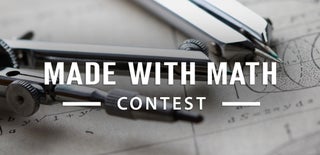Introduction: 3D Printed 16:1 Nema 17 Gearbox
I designed this gearbox to fit onto a nema 17 stepper motor, whilst also being able to be mounted where a regular nema 17 can be mounted.
This allows you to increase the torque in many applications without redesigning the machine you will be using this on.
It has 3 pairs of 12 tooth gears turning 30 tooth gears, so that gives 3 reductions of 0.4. This results in the gearbox having a ratio of 15.625:1. Meaning that every 15.625 revolutions of the motor, the gearbox shaft will rotate once.
Supplies
You will need:
- 3D printed parts - Download STL files here
- Nema 17 Stepper Motor
- 2x MR105-ZZ bearings (5x10x4mm)
- 7x M3 Nut
- 2x 6mm M3 Screw
- 2x 10mm M3 Screw
- 2x 25mm M3 Screw
- M3 Grub Screw
- 50mm or longer M5 Bolt with Hex Head
- 2x M5 Hex Nut
- CA/Super Glue
Step 1: DIY 3D Printed 16:1 Nema 17 Gearbox
Clean up 3D printed parts if you used supports or rims. You may need to drill out the holes of the gears depending on your 3D printer setup.
Push one bearing into the back of the housing as shown. Insert the M5 bolt through it.
Push the back of the bolt until it and the bearing are all the way in. The back of the screw should not protrude the frame.
Step 2:
Insert a hex nut into the pinion as shown then screw in the grub screw halfway so that it is captured.
Slide the pinion all the way down the shaft of the stepper motor, then tighten down the grub screw.
Make sure the grub screw is aligned with the flat on the motor shaft if yours has one.
Step 3:
Screw the stepper motor to the housing, only use the 6mm screws in the holes shown for now. We’ll be securing the entire contraption together with the other two holes.
Take one of the intermediate spur gears and push it down the M5 bolt. It needs to spin freely without the bolt moving. It should engage with the pinion.
Do the same with the second intermediate spur gear, this time pushing it onto the motor shaft. It should engage with the previous spur gear. Don’t try spinning the gears now, because of the gearing ratio it will be very hard.
Step 4:
Push an m5 nut into the output pinion gear.
Screw the gear and nut down the bolt until it is in place and engaging with the previous spur gear. Once in place, use a tiny drop of superglue to secure it to the bolt shaft.
Step 5:
Insert hex nuts into the 6 slots on the top housing.
Push the second ball bearing into the top housing.
Step 6:
Slide the top housing onto the gearbox, aligning the shaft of the bolt with the bearing and the motor shaft with the hole.
Screw down one side of the housing using the 10mm M3 screws. Do the other side with the 25mm M3 screws. Screw down the last M5 nut onto the bolt shaft.
Step 7: All Done!
All done! Well done building your gearbox, or reading to the end if you're just browsing. Check out the video at the top of the page for footage of the gearbox running, as well as video instructions.

Participated in the
Made with Math Contest













